I stopped briefly on the ridge road to take this picture. It would have been better had my headlights been off, but it still shows the interesting moon and the thick white mist on the Kings River.
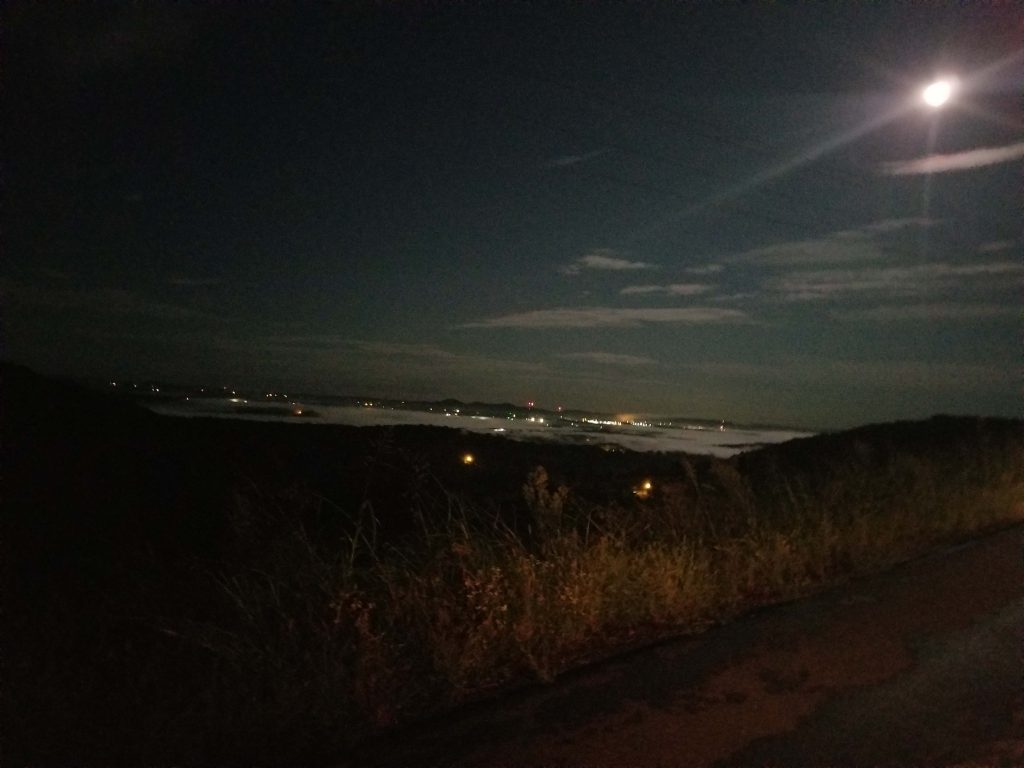

I stopped briefly on the ridge road to take this picture. It would have been better had my headlights been off, but it still shows the interesting moon and the thick white mist on the Kings River.

Just took this photo from the county road on the ridge looking towards the Kings River and Berryville beyond.
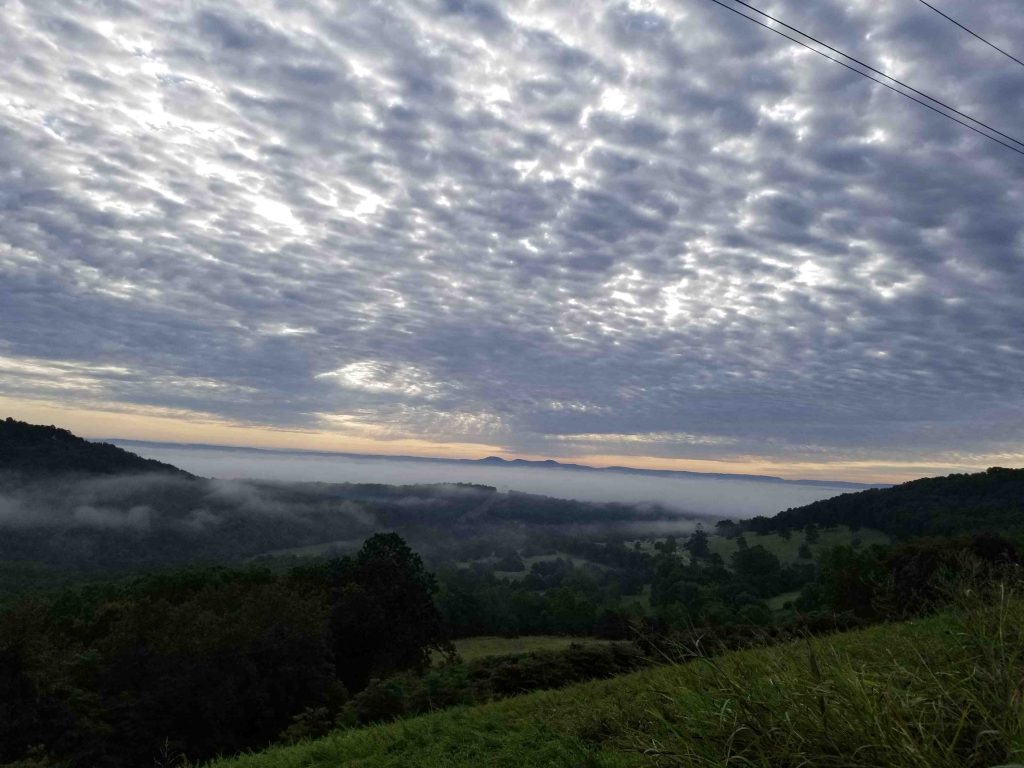
Because our county road runs along a high ridge top, there are several spots where you can see many miles eastward.

This morning, however, a heavy mist obstructed the view of the lower elevations.
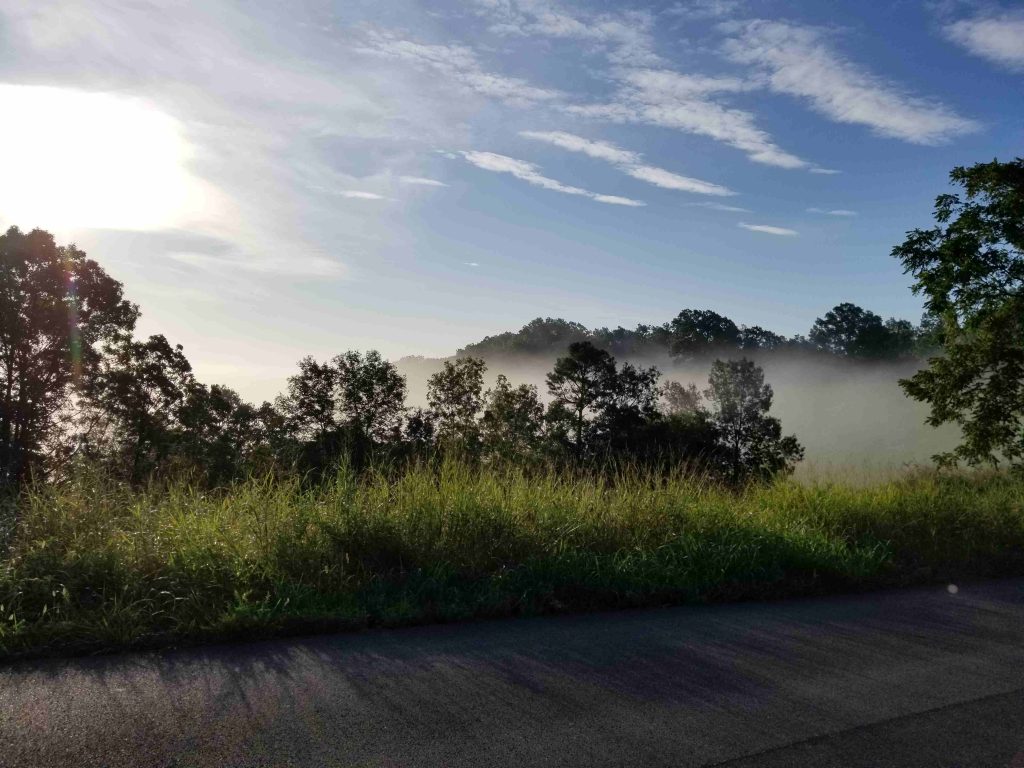
This is not uncommon as just east of us is the valley through which the Kings River runs.
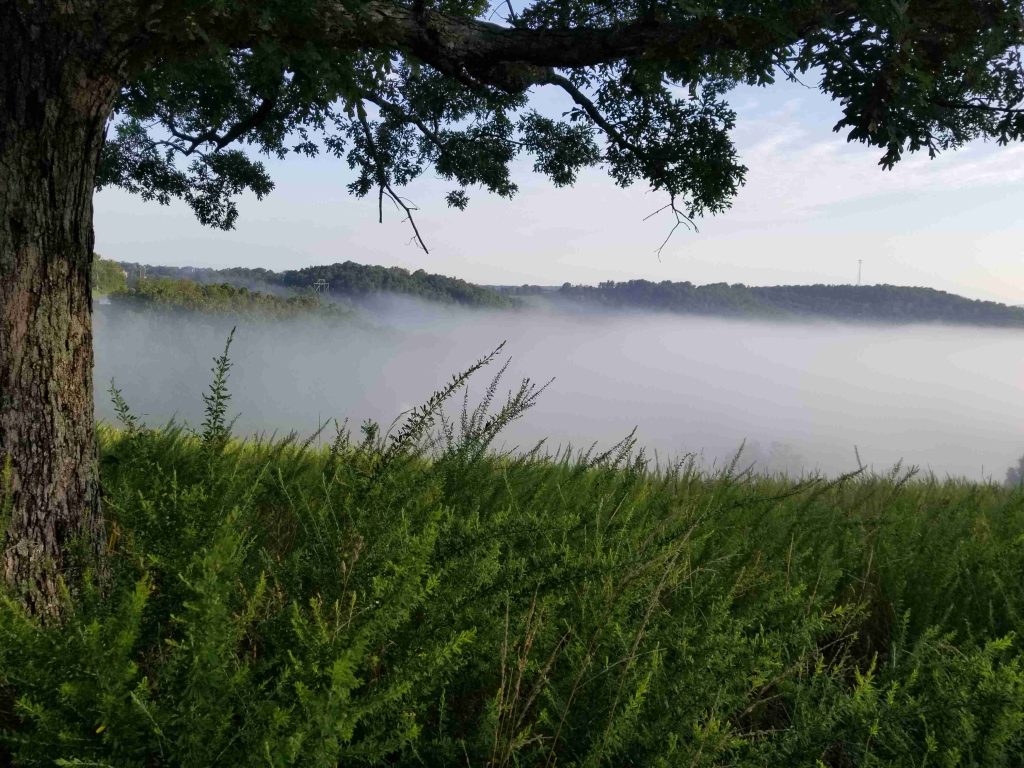
The river is a virtual fog machine.
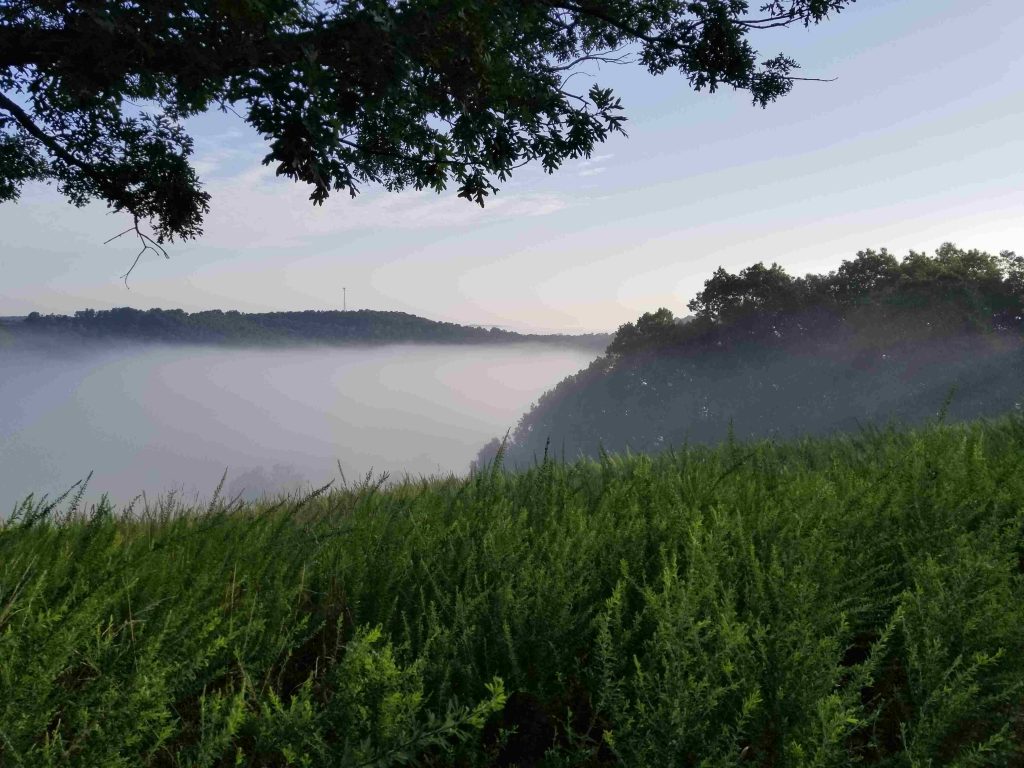
Four miles down Rockhouse Road off US Highway 62 in Eureka Springs is an old house leaning precariously under the unrelenting force of gravity. Informed it was once the home of Cora Pinkley Call, I drove to take a look. On my first pass, I didn’t see it because I was looking in the woods on the east side of the road. Turning around, I drove north and saw the small dilapidated building in the pasture on the west side of the road.
Cora Pinkley Call was a prolific and well known regional writer. As a child she was often sickly and spent her time writing or observing nature on the George Washington Pinkley farm on Kings River. She died in Eureka Springs two years before I was born, in 1966.
Because Cora Pinkley Call was McKinley Weems’ aunt, I swung by and picked him up. We traced our way down Rockhouse Road and looked at the house some more. McKinley said he couldn’t remember Aunt Cora ever living there, that it used to be the Roy Gaddy place. He said that he always knew of her living with her husband Miles Call on Mill Hollow Road. Miles Call was a postman in Eureka Springs after having farmed and soldiered earlier in life.
McKinley did tell me this old family story. In the early 1940s, he went fishing on Kings River with his Uncle Miles. They were on the old Pinkley place and passed a little house. Uncle Miles said, “Do you know what that is? That’s the weaning house.” It turns out that George Pinkley and his wife Mary Jane Harp had a second house on their farm for their children to live in when they first married. They had four sons and six daughters and when the next child married, they would get their turn to move into the weaning house.
But the weaning house was not the same as the house four miles down Rockhouse Road. I talked to more people and looked through land records but never figured out for sure when Cora Pinkley Call lived in the house, but had a good time trying.
Many of the stories I grew up on featured Keels Creek as a recurring landmark. Obviously, this was because various branches of my family either lived on Keels Creek or not too far from it. I’ve always thought it interesting that Keels Creek was named for an early pioneer’s first name: Keel Williams.
I suppose many people only see Keels Creek from the bridge on Rockhouse Road, and much of the time there is no water to be seen because it runs under the surface gravel. Don’t let the lack of visible water fool you, though, because the Keels Creek watershed covers 19,211 acres of land south of Eureka Springs. That is 30 square miles of springs and creeks and rainfall to drain.
One of my favorite Keels Creek stories involves my wife’s great-great grandfather, Murrell Nelson. He had a big place on Keels Creek on the Madison County line (southeast of the present day Turpentine Creek Wildlife Refuge). He had bought the land in pieces from Claude Fuller and others in 1916 when he returned home from California where he had worked for the railroads.
Late in life, Murrell had to move fifty head of cattle from his farm to Berryville. The cattle drive followed Keels Creek eight miles, before fording both the Kings River and the Osage. The destination farm was located behind the present day Maverick Supply. One just doesn’t hear of long cattle drives in Carroll County anymore. It would be a logistical nightmare.
A whole book could be written about M.D. Nelson and overcoming adversity. When he was 7 years old his father (who had returned from the Civil War in one piece) was murdered by a horse thief on his Carroll County farm. After that, Murrell bounced around living and working for various people. He married Nancy Johnson in 1890 and farmed south of Eureka Springs after homesteading 160 acres in the Buck Mountain area. He then sold out and went to California to make his fortune.
Murrell Dixon Nelson died in the Eureka Springs Hospital in 1953 and is buried in the Eureka Springs Cemetery.
A quiet and shy girl, Betty Southerland was born on the last day of 1914 in the remote Mason Bend of Kings River located between Eureka Springs and Rockhouse. Her education started at the tiny Cedar Grove School located on her father’s farm just a short walk from the log house in which she was born. The school was comprised of Betty and her siblings and the children of a couple other farm families.
Betty’s isolated existence was expanded when the decision was made to consolidate her school with the larger West Concord School District closer to Eureka Springs. A nervous wreck at the thought of the change, Betty now travelled six miles every morning to attend the unfamiliar school. Little did she know that it was at Concord that she would become dear friends with schoolmate Dorothy Wolfinbarger.
The Concord School was located on Rockhouse Road near Keels Creek where the Concord Fire Station now stands. Behind it loomed a bald knob that is now being covered by cedars. My understanding is that the view from the top is borderline spectacular, but that isn’t why Betty and Dorothy would climb the steep trail. No, they climbed that steep mountain because the acoustics were so good. As was the rage at the time, both girls yodeled and they would make the rugged trek to the top to do so. They’d yodel together or take turns and then listen as their voices bounced around and echoed back. They’d shout or sing songs and listen.
Betty was my “Granny,” my mother’s mother, and I used to badger her for stories. Several times she told me about her school closing, but she would then recall Dorothy with as much affection as anyone I ever heard her talk about. When Granny would recount this story, it was with a fondness and wistfulness I rarely saw her display when she recollected the events of her physically hard life. The power of childhood friendships came to mind recently with the news that Dorothy had passed away at the age of 98. (Incidentally, Dorothy was the sister of my paternal grandmother Lola Weems.)
Here in the hollow we’ve received about ten inches of rain in the past week. That is a lot of water. It manifests itself in our normally placid springs roaring with anger and temporary creeks appearing in unexpected places. All of this water heads for Keels Creek and then makes a left-hand turn into the Kings River.
The USGS monitors the Kings River at the Grandview Bridge not too far from here. It’s not unusual for the river to be knee deep at this spot. Three days ago the river crested at 35.47 feet at the Grandview Bridge, the 5th highest depth on record.
We observed the river from the bridge when it was about 27 feet deep and it was a muddy, rolling sight to behold. My understanding is that the bridge went underwater when the river crested and the highway was closed. The slogan used for times like that is “Turn Around – Don’t Drown.”
The Nature Conservancy has announced it purchased 4,557 acres on the Kings River south of Eureka Springs, Arkansas. This would be the land owned by the family of the late J. Hugh Liedtke of Pennzoil Oil. While he was alive, J. Hugh Liedtke was the largest land owner in Carroll County.
I’d heard a rumor that the land was going to be developed and feared the worst. Instead, seven miles of the Kings River will be protected. That stretch of the river includes the Mason Bend where the John Southerland farm was located and my Granny was raised.